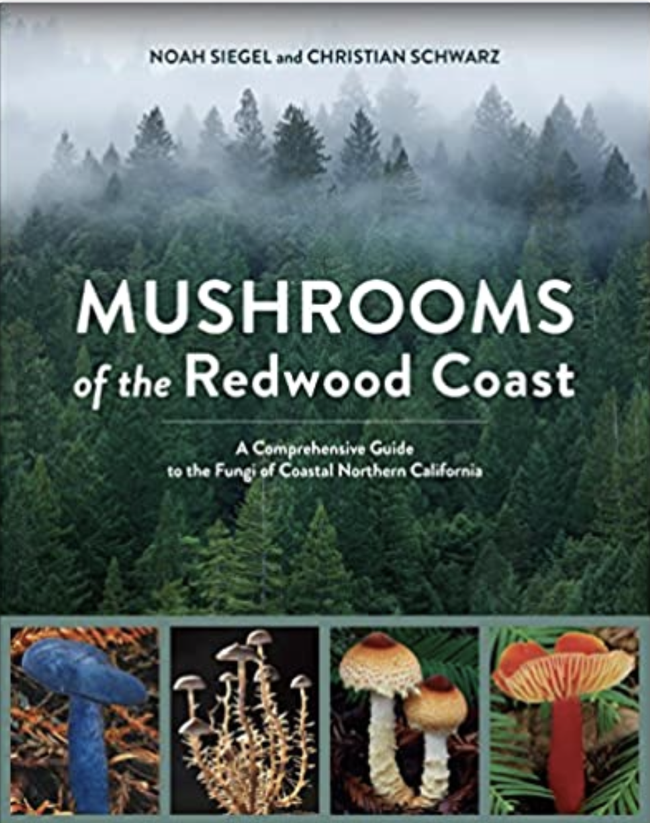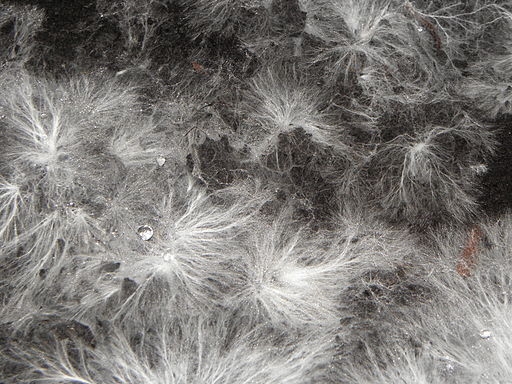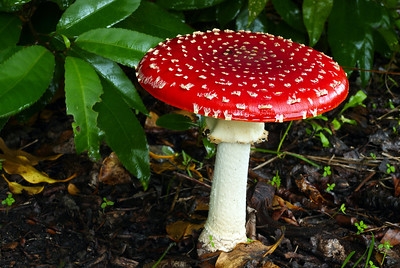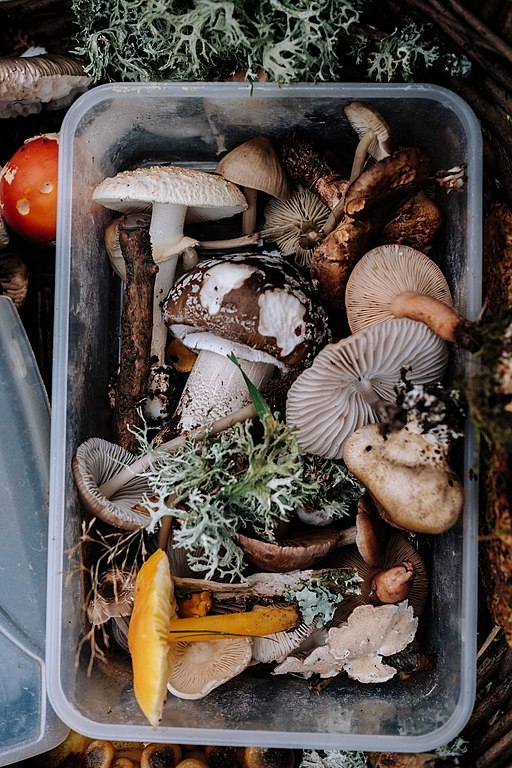One of my daughter's friends from college co-authored a book, Mushrooms of the Redwood Coast, by Noah Siegel and Christian Schwartz (Ten Speed Press). After reading it, I remembered a couple of mushroom hunting walks I had taken, and then gazed at my miniature poodle, whom I had neglected to train as a truffle hunting dog. What a lost opportunity.
My mushroom foraging was in the woods around Santa Cruz, with a friend who had taken classes from David Arora, author of Mushrooms Demystified. Anne had studied mushrooms in the area and could identify the edible ones. This reassured me, as all I wanted in the end was a dish of mushroom Stroganoff, not permanent liver damage.
Even if we hadn't found any mushrooms (but we did), it was a wonderful day walking in the woods, observing the redwoods with new eyes. They weren't just trees, but links in an ecosystem of many life forms, including the network of fibers in the forest floor, called the mycelium.
Mycelium is a hidden web of fungus. What I sought on the hunt were the fruiting bodies of the mycelium. We call them mushrooms. Pick them, and the mycelium remains, to produce more and more mushrooms later. It gathers nutrients from the soil and from decaying plant matter.
The key to successful mushroom hunting is identification. Many varieties aren't edible. Some are poisonous, some are unpleasant tasting, and some have textures that are simply unchewable.
I have looked at websites in which people sent in photographs asking for help identifying fungi. When the answer wasn't Lepiota (edibility ranging from unknown to deadly toxic), it was, "Please send pictures of stem and gills." These features are helpful in identifying a specimen and whether it is safe to eat.
If you are a newcomer to the joys of the quest, I strongly suggest you go on a hunt with an experienced person with some botanical credentials. To be honest, it would be reckless not to do so.
Around here, many of these folks come from the University of California at Santa Cruz. That university has a strong environmental sciences program as well as a tradition of sustainable horticulture. It is also located in an area with redwoods and the attendant fungi. The Kenneth S. Norris Center for Natural History at UCSC has a collection of over 6,000 fungus specimens, and the public is welcome to study them.
A couple of years ago, the Napa County Master Gardeners hosted a talk by Gordon Walker, PhD. Walker has a website called "Fungi with the Fun Guy," and he is also a graduate of UC Santa Cruz, with a doctorate from UC Davis.
Most mushroom hunters are fun people. They get to roam around in nature, after all, which soothes the spirit. They also enjoy posting pictures of the hunt and the feasts that follow. Walker leads mushroom walks in Napa and is most informative.
The Bay Area Mycological Society website is useful and has a listing of speakers. The more education the better is the rule with mushroom hunting. I approve of its motto: "When in doubt, throw it out." The Fungus Federation of Santa Cruz has news about fungus fairs and more.
One mushroom that is instantly recognizable to foragers is the fly amanita (Amanita muscaria). This mushroom is the festive-looking red toadstool with white spots that you see in fairy tale illustrations and reproduced as Christmas tree ornaments. It has spread all over North America and is therefore called a "cosmopolitan fungus." I once saw a ten-inch-wide one growing out of a crack in an asphalt parking lot in Humboldt County.
Amanita muscaria is indeed poisonous. Even so, there are people who claim that by boiling them in two changes of water (and pouring away the water) one can render them safe to eat. Don't bother. They can't taste any better than a chanterelle, and chanterelles aren't poisonous.
One of my favorite novels, My Ántonia, has a scene in which the poor Czech immigrants give a pillowcase full of strange dried bits of food to the more established pioneers, the Burdens. Jim Burden's grandmother doesn't know what it is and doesn't want to have anything to do with it:
She threw the package into the stove, but I bit off a corner of one of the chips I held in my hand, and chewed it tentatively. I never forgot the strange taste, although it was many years before I knew that those little brown shavings, which the Shimerdas brought so far and treasured so jealously, were dried mushrooms. They had been gathered, probably, in some deep Bohemian forest...
Just by tasting that mushroom, Jim is empathizing with the Shimerdas' memories and homesickness. Foraging was an experience in which the whole family took part, and those days are over for them.
But you can have fun foraging if you prepare and learn about the edible, non-toxic mushrooms. Many of them—such as chanterelle, chicken of the woods, hedgehog mushrooms—are easy to identify. Educate yourself and take a guided walk. Remember, "When in doubt, throw it out."
Library Talk: UC Master Gardeners will host a talk on “For the Love of Tulips” via Zoom on Thursday, November 3, from 7 pm to 8 pm. Can you successfully grow tulips in an increasingly hot CA weather? What varieties do better than others? Register to receive the Zoom link.
Food Growing Forum: Join UC Master Gardeners of Napa County for a free forum on “Cultivating Mushrooms” on Sunday, November 13, from 3 pm to 4 pm, via Zoom. Register to receive the Zoom link.
Las Flores Learning Garden: Join Napa County Master Gardeners for a workshop on “Fall Garden Cleanup: Pruning and Planning for Winter in Your Garden,” on Saturday, October 29, from 11 am to 1 pm, at Las Flores Community Center, 4300 Linda Vista Avenue, Napa. Dress for gardening and be prepared to join in hands-on learning opportunities. Space is limited. REGISTER HERE.



